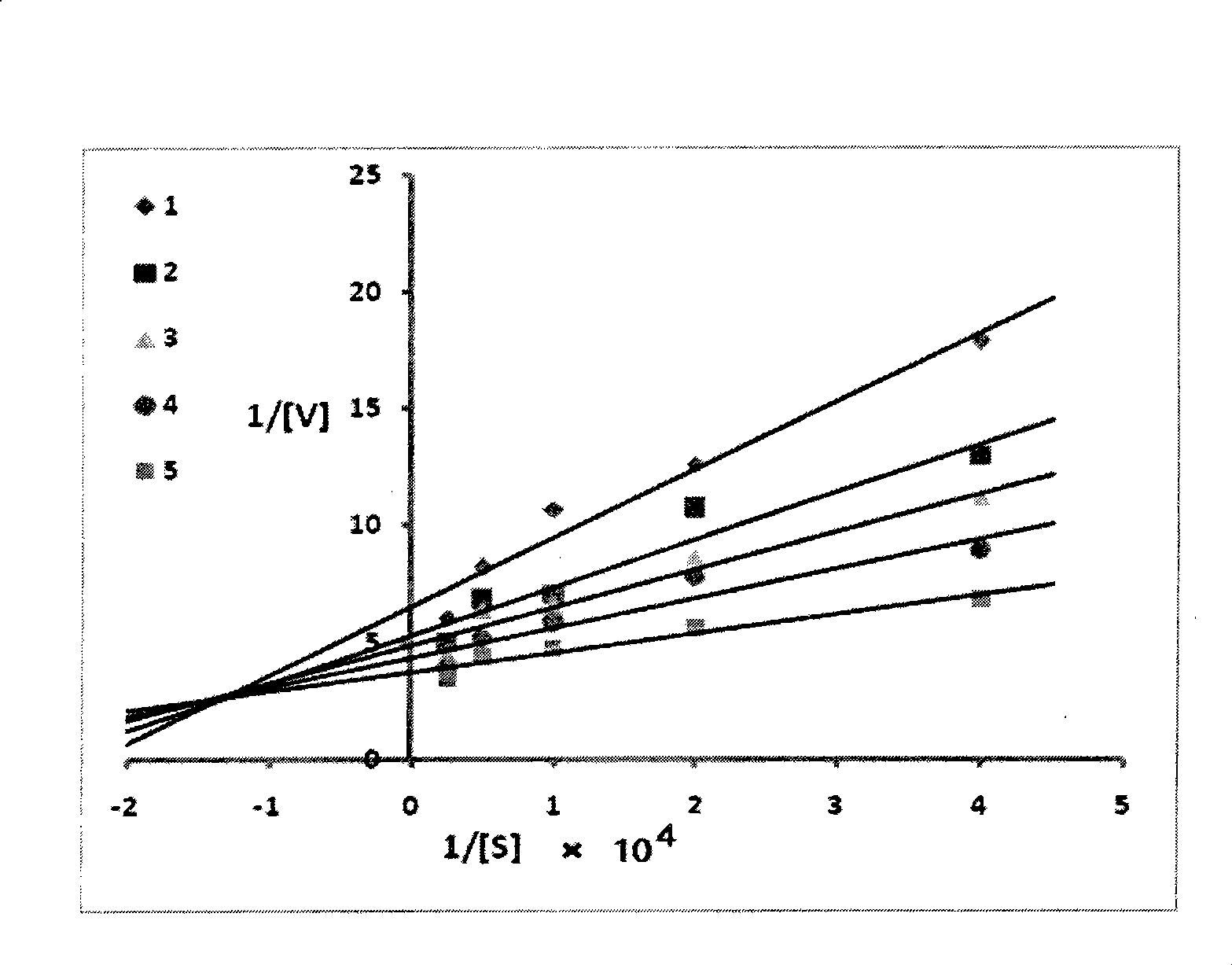Application of rosmarinic acid in bacillus coli L-asparaginase activator
A technology of asparaginase and Escherichia coli, which is applied in the field of biomedicine and can solve problems such as limiting the application of L-asparaginase
- Summary
- Abstract
- Description
- Claims
- Application Information
AI Technical Summary
Problems solved by technology
Method used
Image
Examples
Embodiment 1
[0015] (1) Escherichia coli prepares the extraction of L-asparaginase
[0016] Inoculate the activated Escherichia coli into 400 μl LB culture medium and culture overnight at 37°C; centrifuge the culture at 10,000 r / min for 10 minutes at 4°C to collect the bacterial cells; 400 μl TE buffer (50mmol / LTris Cl, 1mmol / L EDTA, pH7.4) to wash the precipitate, centrifuge to remove the supernatant; suspend the cells in 20μl TE buffer, ultrasonically break at 400 watts, break for 10 seconds, 90 seconds apart, 30 times; centrifuge at 10000r / min for 15 minutes at 4°C , to obtain the supernatant L-asparaginase extract.
[0017] (2) Determination of rosmarinic acid on the activation of Escherichia coli to prepare L-asparaginase
[0018] The reaction system of the sample group contained 0.7ml of TE buffer solution and 0.1ml of asparagine solution of a certain concentration (concentrations were 4×10 -3 , 2×10 -3 , 1×10 -3 , 0.5×10 -3 , 0.25×10 -3 mol / L), crude enzyme 0.1ml, a certain c...
PUM
 Login to View More
Login to View More Abstract
Description
Claims
Application Information
 Login to View More
Login to View More - R&D
- Intellectual Property
- Life Sciences
- Materials
- Tech Scout
- Unparalleled Data Quality
- Higher Quality Content
- 60% Fewer Hallucinations
Browse by: Latest US Patents, China's latest patents, Technical Efficacy Thesaurus, Application Domain, Technology Topic, Popular Technical Reports.
© 2025 PatSnap. All rights reserved.Legal|Privacy policy|Modern Slavery Act Transparency Statement|Sitemap|About US| Contact US: help@patsnap.com

